



































Finding the KPIs That Drive Your Business Page 16


5 Ways to Put Up Your Digital Defenses Page 24












Clean Up the Prep Category With Effective Merchandising Page 32



















































Finding the KPIs That Drive Your Business Page 16


5 Ways to Put Up Your Digital Defenses Page 24












Clean Up the Prep Category With Effective Merchandising Page 32































Don't Let Cash Flow Problems Hold Your Business Back
Tired of the cash flow roller coaster? Find your path to a smoother, more profitable ride with NHPA’s exciting new course, Navigating Cash Flow.


Join fellow retailers for this comprehensive and interactive course designed to help retailers like you take control of your finances and unlock your business’s full potential.
IN THIS GAME-CHANGING COURSE, YOU’LL MASTER HOW TO:
Diagnose and resolve root causes of cash flow problems
Budget accurately and manage financial risk
Optimize inventory management and vendor negotiations
Streamline receivables and payables for improved cash flow
Develop short-term and long-term marketing strategies to boost revenue

Live Session Oct. 15-16 | Indianapolis COURSE INCLUDES: Virtual Workshops 6-Week Remote Training
Weekly sessions to implement newly learned strategies into your operation
Scan the QR code to learn more and enroll today or visit: YourNHPA.org/cash-flow Seats are filling up!


1025 E. 54th St. Indianapolis, Indiana 317-275-9400 NHPA@YourNHPA.org YourNHPA.org
COMMUNICATIONS
Lindsey Thompson Managing Editor lthompson@YourNHPA.org
Melanie Moul Research & Enterprise Content Manager mmoul@YourNHPA.org
Jacob Musselman Content Coordinator jmusselman@YourNHPA.org
Autumn Ricketts Lead Graphic Designer Olivia Shroyer Graphic Designer Austin Vance Production Manager
Samantha Mitchell Production & Design Assistant
Freda Creech Sales & Production Assistant
Nathan Piper Marketing Coordinator
ASSOCIATION PROGRAMS
800-772-4424 | NHPA@YourNHPA.org
Katie McHone-Jones kmchone-jones@YourNHPA.org
Executive Director of Retail Engagement & Events
Jesse Carleton jcarleton@YourNHPA.org Training Manager & Editor
Renee Changnon rchangnon@YourNHPA.org Retail Engagement Specialist
SALES
Jordan Rice 217-808-1641 | jrice@YourNHPA.org Regional Sales Director
CIRCULATION, SUBSCRIPTION & LIST RENTAL INQUIRIES
CIRCULATION DIRECTOR Richard Jarrett, 314-432-7511, Fax: 314-432-7665

Meet the 2024 NHPA Young Retailer of the Year honorees and learn more about these high-achieving, dedicated and forward-thinking retailers in the October issue of Paint & Decorating Retailer
This year’s class has made a positive impact in their operations, communities and beyond and proves that the future of the channel is bright.
PAINT & DECORATING RETAILER
(ISSN 1096-6927): Published monthly except December by the North American Hardware and Paint Association, 1025 E. 54th St., Indianapolis, IN 46220. Phone: 800-737-0107. Subscription rates: January through November issues, $50 in U.S., payable in advance. Canada $75 per year. All other countries $100 per year. Single copy $7, except July issue, $25. Periodicals postage paid at Indianapolis, Indiana, and additional mailing offices. Postmaster: Send address changes to Paint & Decorating Retailer, P.O. Box 16709, St. Louis, MO 63105-1209. Returns (Canada): Return undeliverable magazines to P.O. Box 2600, Mississauga, Ontario L4T 0A8. PM# 41450540. Copyright © North American Hardware and Paint Association, 2024.
OUR MISSION
The North American Hardware and Paint Association (NHPA) helps independent home improvement and paint and decorating retailers, regardless of affiliations, become better and more profitable retailers.
NHPA EXECUTIVE STAFF
Bob Cutter President & CEO
Dan Tratensek
Chief Operating Officer & Publisher
David Gowan Chief Financial Officer & Executive Vice President, Business Services
Scott Wright Executive Director of Content Development & Executive Editor
NHPA BOARD OF DIRECTORS
CHAIRMAN OF THE BOARD
Ned Green, Weider’s Paint & Hardware, Rochester, New York
EXECUTIVE VICE CHAIRMAN
Joanne Lawrie, Annapolis Home Hardware Building Centre, Annapolis Royal, Nova Scotia DIRECTORS
Alesia Anderson, Handy Ace Hardware, Tucker, Georgia
Jay Donnelly, Flanagan Paint & Supply, Ellisville, Missouri
Ash Ebbo, Clement’s Paint, Austin, Texas Scott Jerousek, Farm and Home Hardware, Wellington, Ohio
Michelle Meny, Meny’s True Value, Jasper, Indiana
Michael Sacks, FLC Holdings, LaGrange, Texas
SECRETARY-TREASURER
Bob Cutter, NHPA President & CEO
NHPA CANADA
NHPA CANADA
Michael McLarney, +1 416-489-3396, mike@hardlines.ca 330 Bay Street, Suite 1400 Toronto, ON, Canada M5H 2S8

Read how two retailers used the wealth of information found in their financial statements to address business challenges. Learn the essential key performance indicators you should focus on and how to train employees to help improve them.
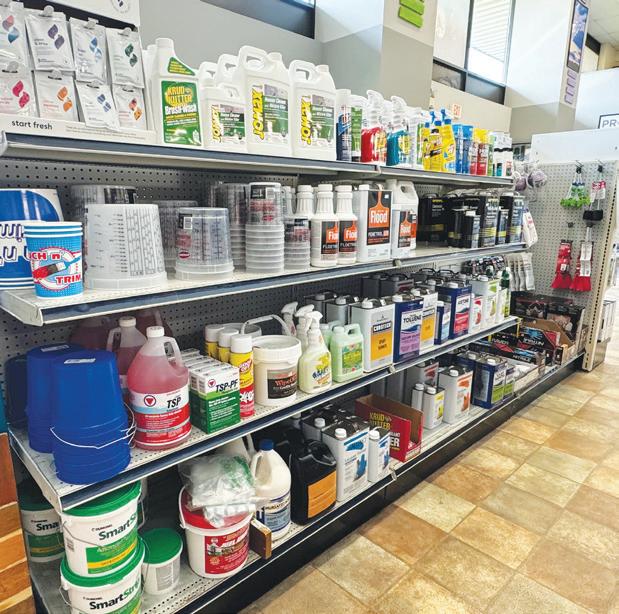
Taking cybersecurity seriously is part of everyone’s job. Foster a culture of cybersecurity inside and outside your operation with these strategies and tools from the Retail &
In pursuit of helping independent operations become better and more profitable, NHPA places a key focus on education. Hear from past students of the association’s Foundations of Retail Program and how its courses can elevate your business.
Discover how to merchandise your store and train your staff to more effectively sell sponges, rags and cleaning products and provide your customers with the products they need for the whole project from start to finish.


When performance cannot be compromised, FrogTape® – the brand that reinvented painting with PaintBlock® Technology – delivers professional results you can trust –when it matters most.









PERHAPS IT’S BECAUSE we’re in a period of negative year-over-year comps (seven consecutive quarters for Home Depot and six for Lowe’s) following the historic sales gains of the past few years. Maybe it’s because we fear a greater slice of the home improvement pie is moving away from brick-and-mortar and giving way to online shopping. Perhaps it’s the anticipation of new tech, including AI, that will change the way we compile, analyze and manage financial metrics moving forward.
It might be a combination of all three, but the fact that independent retailers’ interest in industry-specific key performance indicators (KPIs) is at an all-time high is more likely a factor of operating in a 24/7 info cycle. We constantly want to know what’s going on and how everyone else is doing, especially when things are trending a bit downward. In the past 12 months, it seems all discussions with retailers have led to a conversation of KPIs: “What are you seeing in customer count trends?” and “How is your average transaction holding up?” are a couple of the more common questions. Now we’re hearing more retailers ask about units per transaction and even closure rate, which until the last few years has been somewhat of an enigma to most independents who simply don’t know how many people walk through the door each year. KPI questions such as these are asked in almost every setting where retailers gather these days—at least the gatherings we host.
“ At NHPA, we have always been at the forefront of the KPI conversation, primarily because we have been compiling and publishing financial data for more than 100 years.”
At the North American Hardware and Paint Association (NHPA), we have always been at the forefront of the KPI conversation, primarily because we have been compiling and publishing financial data for independent home improvement retailers in our Cost of Doing Business Study for more than 100 years. This study benchmarks the financial performance of hardware stores, home centers, LBM outlets and paint and decorating retail stores.
But it seems the frenzy over KPIs has never been this high, at least not in my 30 years with the association. Nearly every roundtable I moderate for NHPA, including Marketing & Merchandising, Human Resources & Training and even IT executives, has become like a group of CFOs sitting around the table talking in their own special CFO vernacular. The Marketing & Merchandising roundtable in particular has had robust discussions related to which KPIs marketing owns versus which ones belong to merchandising.
We teach KPIs to students in our Retail Management Certification Program, framing the discussion around KPIs within the revenue equation. It’s interesting to see the lightbulb moment when students realize retail sales can only result from several variables in the formula expressed by: Total store traffic x closure rate = number of transactions x average transaction amount = sales. Then we extrapolate it further and multiply it by gross margin to get to gross margin dollars—what you take to the bank.
On Page 16, we highlight two retailers focused on driving business by managing KPIs and dialing in their team members to not only understand the financial keys to higher performance, but what everyone on board can do to help the cause. We also share a few of the KPIs that are on everyone’s minds these days. We hope you enjoy it.

Scott Wright Executive Director of Content Development & Executive Editor
How
to Reach Dan Dan Tratensek dant@YourNHPA.org

SEPTEMBER HAS ALWAYS been special for me. Not only do my mother’s, my youngest daughter’s, my youngest granddaughter’s and my birthday all fall in September, but there’s something else special about the ninth month of the year.
September marks the official transition into my favorite season of the year, but it also represents a point in time when we start feeling the current year winding down and begin thinking about what’s to come in the next year.
For most everyone in the business world this means it’s time we all start thinking about budgeting.
If we are thoughtful in our budgeting this can be an exciting time, when we begin to turn those thoughts about where we might go into actual plans that we hope to execute.
For me, this is the essence of solid budgeting. Sure, we have to crunch numbers, make predictions and plug everything into a spreadsheet, but at a higher level, budgeting is the process we go through to put all of our ideas to the test.
“Plan and budget for the things you can control. You will always have unexpected things happen and the best business managers learn to adapt and overcome.”
As we prepare to enter the final quarter of 2024, I am well aware that the last three or so years have presented all of us with some budgeting challenges. As I write this, I’m sure we are all facing a series of major uncertainties that make predicting the course of our business for the balance of this year challenging, let alone trying to gain a longer view.
Although our view of the path forward might be a bit murky, there is one budgeting principle that I hold myself to but also encourage others to embrace.
Plan and budget for the things you can control. You will always have unexpected things happen and the best business managers learn to adapt and overcome.
When you sit down to plan, start taking into account the things that have a direct impact on you and have a plan on how you are going to execute those things.
If you want to grow your top-line sales, how are you going to do this? Maybe you’ll focus on increasing transaction size. Well, how? What are the things you can do, that you control, that can have a direct impact on this?
This is how you start building a thoughtful budget and plan for the future.
It’s easy to get caught up pondering all those things that are outside your ability to impact like the election, interest rates, etc. I would offer that your time would be better spent plotting for the things you have the ability to influence.
As you sit down this month to order Dan a nice birthday gift, sip on your pumpkin spice latte and start thinking about 2025, do yourself a favor and consider the possibilities, but start with the plans you know you can execute. Then go do them.

Dan M. Tratensek Chief Operating Officer & Publisher
The 2024 Cost of Doing Business Study is available now. See how your operation compares against like businesses and get your copy today at YourNHPA.org/codb
Jim Robisch has been working in the home improvement channel for over 40 years. He recently retired from The Farnsworth Group, where he was a senior partner and adviser focusing on retail research and consulting. He directed retailer and wholesaler services activities for the firm, including customer intelligence, brand image and positioning, market expansion, customer satisfaction, growth and strategic planning. Jim has worked with more than 1,000 independent retailers and over 50 of the top industry chains and the largest wholesale groups. He has evaluated over 1,000 trading areas and visited over 10,000 stores. In retirement, Jim remains active with consulting work and serving on numerous industry and non-industry advisory boards.




















Let me first say that I have a confession to make: I really hated all my accounting courses. It wasn’t that I was necessarily bad at them, but to me they were just so boring. Like watching paint dry comes to mind. However, later in my life, it became evident that accounting and all that “numbers stuff” was one of those necessary evils. (Even though neither is anything but evil.) One should always remember that accounting, or your “numbers stuff,” should drive your management decisions and most certainly your growth planning.
Confusion abounds when it comes to this topic. So many relate accounting only to income statement and balance sheet management. This perspective is so limiting. The reality is that you truly can’t evaluate, let alone manage, anything in your business without first measuring how it’s performing. How do you know where to address problems and invest in greater opportunities?
The best place to start when evaluating your performance is to grab a copy of the Cost of Business Study (CODB) from the North American Hardware and Paint Association. It is the easiest and minimum amount of comparative due diligence you should do. The CODB results provide a wide-ranging view of stores’ financial performance. The report covers performance results over time, including by store type—hardware store, home center, LBM outlet and paint and decorating outlet—size, performance and more. It’s not skewed by brand or wholesaler affiliation. However, if your supplier does a similar survey, I recommend getting that data for comparison also. But nothing beats comparison to the universe.
I also suggest comparing data in your roundtable groups, as typically these involve active discussion about the numbers. This kind of comparison offers great insights for your own analysis.
There is other critical data you can’t get off your income statement and balance sheet. It’s what I call the “cool stuff’ and it is so important in today’s market environment. You need to get customer feedback. Better yet, try to obtain feedback from infrequent customers or even those who don’t shop your store. Mystery shoppers and quick customer exit surveys can help here.
Why? Because it’s imperative for management to understand their advertising effectiveness, online position, customer satisfaction, store avoidance issues and more. My favorite is finding out what certain target customer groups think about you. More specifically, find out why they don’t shop you frequently or at all.
I’m a data junkie for sure. Remember: Numbers don’t lie, so use them!
Jim Robisch Senior Partner & Adviser, Ret. The Farnsworth Group
The NHPA Foundations of Retail Program offers new managers and key employees leadership development skills. Learn more at YourNHPA.org/foundations
Jared Brown is the director of business intelligence for The Aubuchon Co. He has a degree in kinesiology and biomechanics from Miami University and came to Aubuchon in 2015 from the banking world. Jared grew up in Ohio and moved to Massachusetts in 2012, where he currently lives with his wife and daughter. At Aubuchon, he is involved in inventory planning and forecasting, margin management and retail pricing and process improvement and operations. Jared has been integral in streamlining and modernizing Aubuchon’s inventory management strategies after the company closed its distribution operations and transitioned to a supplier-based model.






CONNECT
Email jared.brown@aubuchon.com
LinkedIn Jared Brown
Irecently had a deep conversation with a peer who boasts over five decades of experience—he’s been working in hardware since before I was born. Despite our experience and age gap, I was amazed at how similar our struggles are with the varying personalities, work ethics and diverse leadership styles. “Retail is detail,” he would repeat as we sought solutions to the day’s new challenges.
What I most appreciate about his perspective, steeped in a wealth of history, is that it doesn’t reduce to cliches like “no one wants to work anymore” or “everyone is just lazy nowadays.” His decades of experience have taught him the value of continuous learning and teaching—a cycle he’s both benefited from and contributed to.
Fun fact of the day: Giraffes can walk within an hour of being born. This skill is genetically coded in their DNA, unlike humans, who aren’t born with inherent knowledge of retail skills like how to flush product, rotate stock or close a sale. We must be taught. Some are fortunate enough to learn by imitation—a case of “monkey see, monkey do.” However, this mimicry is flawed. Without understanding the why behind actions, employees may fail to grasp the importance of their tasks.
The decline in quality begins when we cease to teach. When we neglect to explain the reasons behind our actions, we contribute to the phenomenon of new retailers overlooking crucial details. They might remain oblivious to these details unless we point them out, and even then, it may take several attempts to instill these lessons.
Granted, watching a new retailer learn the ropes is not as captivating as observing a baby giraffe’s first steps. Yet, the more we invest time and effort in imparting these skills, the less frustration we’ll encounter when expecting them to perform independently. Just as we anticipate that children learning to walk will fall, we should also be prepared for new retailers to stumble in their initial steps.
The key to cultivating a competent retail workforce lies not only in teaching the how but also the why behind each task. Equally important is our comfort and acceptance that these lessons often need repetition. In nurturing the growth of our retail professionals, just as in the natural world, our role is not merely to teach them how to walk but to guide them until they can confidently stride forward on their own.
Thank you, Reggie.
Jared Brown Director of Business Intelligence
The Aubuchon Co.

3M ™ High Strength Color Changing Spackling Compound
3M™ High Strength Color Changing Spackling Compound changes from blue to white, so you know when it’s ready to sand. Patch dents, dings or even holes up to 3-inches. Make wall repairs with confidence. For when results matter.
built to perform
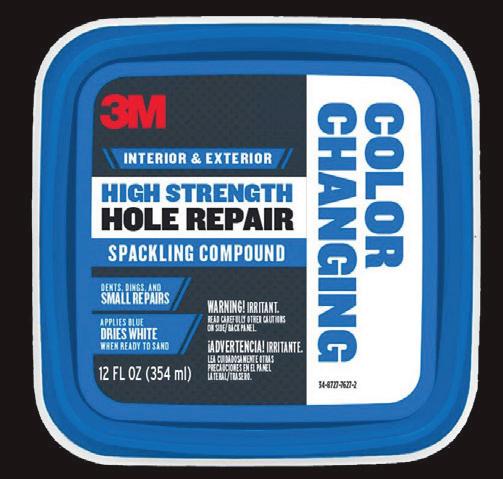

3M ™ PRO GRADE PRECISION ™ Dust Channeling Sanding Block Sponge
Dust-channeling design for less clogging and a faster finish.* It’s a dual-purpose tool for both detail and flat sanding. A tool that’s engineered for endurance. built to perform








RESOURCES
Color Abounds
Access all of the industry’s trending colors in one place with the Trainer’s Toolbox guide from the North American Hardware and Paint Association. Download it at YourNHPA.org/product-knowledge
KNOWING COLOR TRENDS is key to differentiating your business as the place to find the latest designs. We’re keeping tabs on when the industry’s biggest players will announce their 2025 Color of the Year picks. Check out some of
the shades that have already been released along with the likely timing for others below. Subscribe to receive the Paint & Decorating Retailer newsletter at YourNHPA.org/subscribe to be sure you get the announcements in your inbox first.
Sherwin-Williams
Sherwin-Williams 2025 Colormix® Forecast
Includes 48 colors categorized into capsules: Chrysalis, Paradox, Wellspring and Kindred. Shades from each capsule are below.
BUSINESS FOR SALE
Northwest Farm & Home Supply Co.
Location: Lemmon, SD
Gross Revenue: $3.21 million
The main building is a total 27,213 sq. ft. of retail and warehouse space on 4 acres. The main bldg. was constructed in 1994 with additions constructed in 2002 and 2004. Single story with 22’ clear height in 11,459 sq. ft. of lumber warehouse, three grade level doors and two dock height doors.
BUSINESS FOR SALE
Hoosick True Value
Location: Hoosick Falls, NY
Gross Revenue: $1.26 million
Price: $1.875 million
This opportunity offers a turnkey sale of a general hardware business located in northeastern Rensselaer Co., New York. The business serves five towns and southwestern Bennington Co., Vermont, and 25 miles east of Troy, New York.
BUSINESS FOR SALE
Home Improvement Supply Store
Location: Missouri
Gross Revenue: $1.04 million
This historic home improvement and hardware store is a staple of its community and operates from its headquarters in the Kansas City Metropolitan Area of Missouri. The Company is a long-standing retailer and installer of consumer and commercial improvement products.
BUSINESS FOR SALE
Albrights Hardware & Garden Center
Location: Allentown, PA
Gross Revenue: $1.9 million Price: $800,000
Albrights Hardware is an established hardware store with strong neighborhood ties and has been a Lehigh Valley staple for over 50 years. The current owners have owned the store since 1992. Albrights serves its loyal customer base by providing quality products and exceptional customer service.
BUSINESS FOR SALE
Central Vermont Paint, Flooring and Decorating Business
Location: Vermont
Gross Revenue: $2.82 million
Price: $1.1 million
Full-service decorating store providing flooring, paint, window treatments, kitchen/bathroom remodeling, cabinetry product offerings, design assistance, specialized service, and professional installation.
BUSINESS FOR SALE
Private Business
Location: Alabama
Gross Revenue: $2.21 million
Price: $649,000
BUSINESS FOR SALE
Private Business
Location: Pennsylvania
Gross Revenue: $1.6 million
SEEKING BUSINESSES
The Aubuchon Company
For our next acquisition, we are looking for:
• Single-store and multi-store hardware operations
• Located in northeast and southeast United States
• Store size of 5,000-30,000 ft 2
• At least $3 million in average store sales
SEEKING BUSINESSES
Bolster Hardware
We are looking for:
• Geography agnostic
• With or without real estate
• Store revenues of $1.5M+
• We prefer to honor the family name and heritage in the local community by not changing the name
• We prefer to keep all employees as part of the acquisition
SEEKING BUSINESSES
Gold Beach Lumber Yard
We are looking for:
• Single-store and multi-store hardware operations
• Located in the Pacific Northwest
• Store size of 5,000 ft2-30,000 ft2
Retailer Recommendations
Send an email to editorial@YourNHPA.org telling us about the products your customers love and why they are such a hit in your business.



STAIN AND SEALER
CABOT PRODUCTS GROUP
cabotstain.com
The Heat-Reducing Solid Color Stain + Sealer from Cabot offers durable, even color that blocks UV rays and deflects the sun’s heat. It is available in three colors and covers old stain with long-lasting waterproofing.
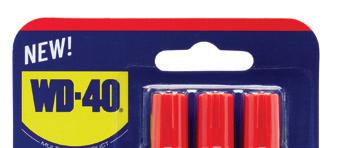


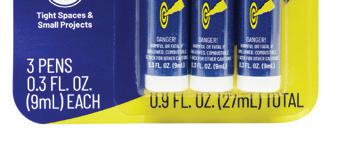
ABRASIVE ATTACHMENT
DREMEL
dremel.com









WD-40® BRAND
wd40.com
The WD-40 Precision Pen is a compact version of the original WD-40 formula, used to eliminate squeaky hinges, rusty bolts or stuck mechanisms in tight spaces. The compact and pocket-sized design allows users to take WD-40 anywhere.




The Abrasive Point from Dremel is a bullet-shaped abrasive point used for deburring or paint removal without removing the base material. Spinning at 20,000 revolutions per minute, this attachment can be used on stainless steel, cast iron, silver, steel, brass and more.






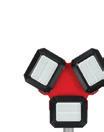






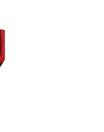
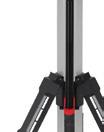

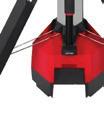
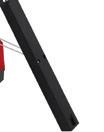
MOBILE LIGHT TOWER
MILWAUKEE TOOL milwaukeetool.com


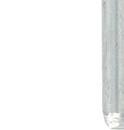

The M18™ ROCKET™ Tower Light/Charger from Milwaukee Tool is designed to deliver a lighting solution that adapts and performs on the job site. The tower sets up in seconds to a 7-foot maximum height and collapses to less than 4 feet. The multidirectional light head allows users to orient the three pivoting light heads to cast light in several directions.
FOLDING UTILITY KNIFE
SPEC OPS TOOLS specopstools.com
The Spec Ops fixed folding utility knife is compact, tested and proven unbreakable on the harshest job sites. At 3.5-inches when folded, this knife can fit into any pocket and comes with a belt clip for portability and storage. It comes with a pistol-style finger grip and camo-textured body, and the push-button blade swap allows for tool-free and rapid reloading of utility blades.




LATEX SEALANT DAP GLOBAL dap.com





PAINTLINE paintline.com
The Wall Mounted ProDrying Rack from PaintLine is a shop-based solution for drying cabinet doors. The 15-shelf rack can be mounted to a wall with the included hardware and fasteners, creating a stationary rack for the drying process. The shelves are removable and can be configured to suit a variety of sizes.
The Alex Ultra Advanced Latex Sealant from Dap Global features professional grade latex and anti-shrink technology ensuring a durable, flexible and UV-resistant bead. It is paintable in 15 minutes and forms a waterproof and mold resistant seal.




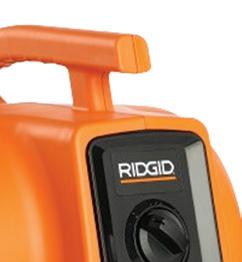


AIR MOVER RIDGID ridgid.com
The RIDGID AM2265 Mini Air Mover helps dry, cool and ventilate the job site. Equipped with 600 CFM, the circulation can be controlled by the three-speed induction motor to deliver the desired amount of air movement. The air mover features an ergonomic handle and a built-in cord wrap for the included 10-foot power cord.
MARBLE TILE
MARBLE SYSTEMS
marblesystems.com
The Allure York Marble Mosaic tile from Marble Systems comes in packs of 240 pieces. Each tile covers 1 square foot and can be used on interior walls and floors, backsplashes and showers.




ninelineapparel.com

Nine Line Apparel’s Ballistic Sunglasses are rated to protect eyes from the sun and impacts alike, filtering out 100% of ultraviolet light rays. The sunglasses are available in black or camouflage and the lenses are available in red, black or green.
and









SNAPPOWER
snappower.com
The LumiDock by SnapPower is a versatile recessed downlight featuring an integrated Always-On device dock. This DIY upgrade transforms 5-inch to 6-inch can lights into a smart device docking station. Compatible with a range of popular smart devices including Alexa Dot, Google Mini speakers, Ring, Blink, Wyze and Google Nest smart cameras, the LumiDock provides seamless integration for a connected home experience.




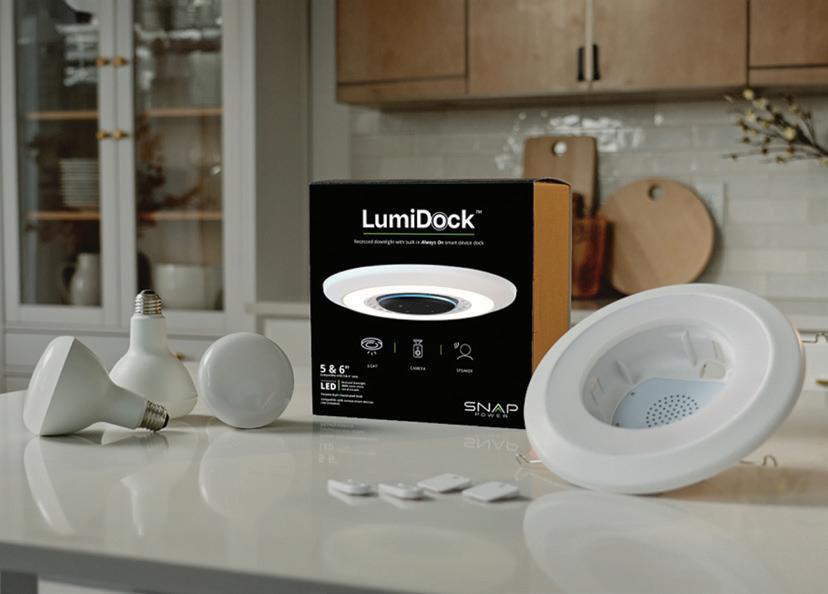
ROBE HOOK HOUSE OF ROHL
houseofrohl.com
The Modelle Robe Hook from House of Rohl is a brass hook that can be installed with one hole. It is available in polished chrome or nickel, matte black, satin nickel or unlacquered brass and features a limited lifetime warranty.
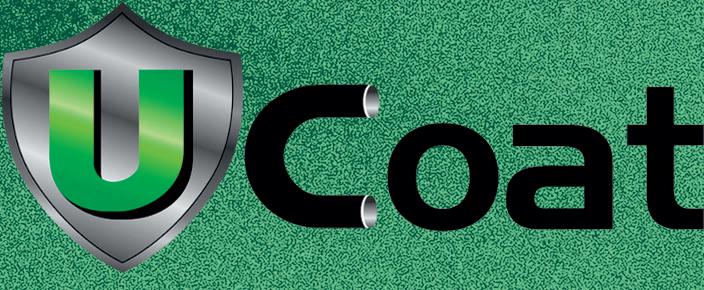

























































BY JESSE CARLETON
Much like a report from your doctor, financial statements provide valuable insight into the health of your business. They can explain some of the aches and pains you might be feeling and uncover hidden issues you should address before they become full-blown problems.
Even if the financial health report is good, your income statement and balance sheet can offer direction on the ways to best spend your resources as you grow the business.
Any strategy for the future should be rooted in the insights from financial metrics such as your key performance indicators (KPIs), but what many retailers find challenging is understanding how to use that information to make real changes.
They may also be reluctant to share financial information with the rest of their staff, who can actually be an asset when they understand how they can impact those financial drivers.
This month, Paint & Decorating Retailer spoke with two retailers who used their KPIs as a starting point for addressing challenges in their operations. Their insights will help you take specific steps to utilize the wealth of data contained in your financial statements and strategize for the future, including training your team on understanding financials so they can help you be successful.
Most retailers prefer to keep their financial statements as confidential as possible. However, there’s value in showing at least a portion of your performance metrics to your employees. As Ash Ebbo at Clement’s Paint in Austin, Texas, has discovered, a little transparency can increase your employees financial intellegence and understand what they need to do to make your company more profitable.
Learn key financial terms and ratios that will help you understand your accounting statements at YourNHPA.org/operations.
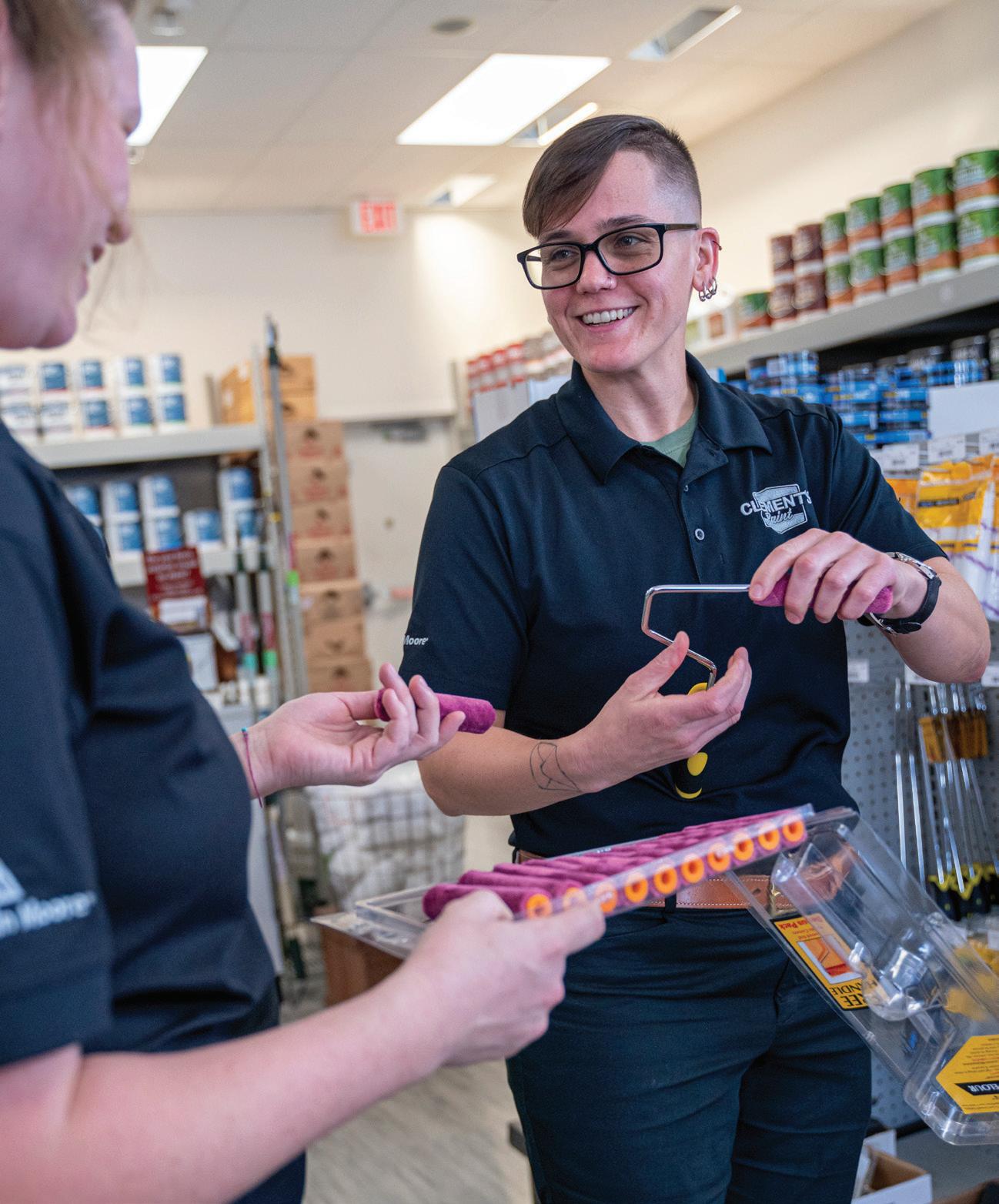
“As soon as our managers could see and understand our P&L statement, they instantly started diving into ideas about how they could improve it.”
—Ash Ebbo, Clement’s Paint
While Clement’s Paint, which has eight locations around Austin, has built a solid reputation for good customer service and has a loyal customer base, Ebbo also feels the pressure of a competitive market. Rising costs and expenses, combined with customers who still demand competitive prices have eroded margins. A post-pandemic market correction flattened sales.
As part of a strategy to invigorate profits, Ebbo brought in the North American Hardware and Paint Association (NHPA) to conduct a seminar on financial training for store managers. During the session, managers learned how to read a profit and loss statement, the significance of key metrics and what they could do to improve them. For many, the training offered a whole new way of thinking about the business.
Ebbo combines certain line items on the P&L statement to make the more sensitive areas vague, only giving managers quarterly reports, as that offers a better perspective of how the numbers are trending.
“The training we had with NHPA was excellent, very beneficial to what we were trying to do,” Ebbo says. “As soon as our managers could see and understand the P&L statement, they instantly started diving into ideas about how they could improve it. We also did the DiSC training, which has really helped with our team’s communication skills and has helped create a more effective work environment.”
One of the challenges facing Clement’s Paint was an overall decline in paint sundry sales. While some locations were posting healthy sundry sales numbers, others were far below where they should be.
“One store’s sales were particularly low, and when the manager at that location saw the numbers, he was a little surprised, but immediately started thinking about how to change it,”
Ebbo says.

Money Smart
Financial training has helped managers at Clement’s Paint make better decisions and sales associates increase average sales.

Everyone on your team should have some understanding of the cost involved in running a business. The best way to start is to use NHPA’s popular training course, Our Three Pennies of Profit. It uses a story format to explain the basics of profit and loss in a retail environment. It is essential training for all employees to show how reducing retail shrinkage is one of their responsibilities. Employees also learn the concept of variable pricing and why simply raising prices isn’t the answer to increasing profit.
Go to YourNHPA.org/membership or scan the QR Code to learn more.

Performing a gap analysis of all operating expenses can reveal areas where you may be overspending. Create a gap analysis by listing your expenses in one column and industry averages, as reported in NHPA’s Cost of Doing Business Study , in the next. Mark the top five areas where you are spending more than the national average and then identify the cause for the discrepancy and look for solutions.
Learn more about the Cost of Doing Business Study by scanning the QR Code
Access the Industry’s Report
Get your own copy of NHPA’s Cost of Doing Business Study and learn how to participate in next year’s survey at YourNHPA.org/codb
Floor-level associates don’t see financial records but Ebbo wants them to know how to influence the size of the sale. Conversations include talks about average transaction size in terms of lines per ticket or how many items are sold per transaction.
“If every ticket only has one or two lines on it, that probably means we’re not getting the sundry sales,” Ebbo says. “There should be at least four to five lines on that receipt. For every customer who forgets to pick up a sundry item at our store, we’re giving our competitors a chance to sell it to them.”
Clement’s Paint started a monthly sales campaign to encourage sundry sales. The management team picks a few bestselling items, marks them at a deep discount and merchandises them in a highly visible area of the store, generally near the cash register. Merchandising is the same in all eight locations so customers get used to seeing these sundry sale items, regardless of where they shop. The display and location make it easy for employees to suggest an add-on sale each time a customer makes a purchase.
No step is too small to increase sales and cut expenses. Giving employees exposure to the operation’s finances empowers them to participate in helping Clement’s improve profits and feel like they have a stake in the business.
“Financial training has made our employees smarter and helped managers make more educated decisions,” Ebbo says.
If you were to chart sales at H & H Home and Hardware in Marion, Kentucky, for the past five years, it might look like a rocket taking off. That’s at least what it felt like for owner Shanna West and her family.
But a trend of rising sales wasn’t all the company’s accounting statements had to say. A deeper look at the numbers revealed some challenges creeping in that would be easy to miss for anyone focused only on top-line sales.
In 2019, Shanna and her husband David bought into the family business with Shanna’s parents, Alan and Stacy Hunt. Through a series of events that included moving to a new location, expanding the size of the building, adding categories after competitors closed and riding a sales boom during the pandemic, the operation today is six times larger than it was in 2019. West and the other owners found themselves so involved in the day-to-day running of the business, they had little time to think about setting goals for the future.
“The idea of ‘working in your business rather than on your business’ described our management style,” West says. “We found ourselves exhausted after record-breaking sales weeks and lacking real direction and reasoning when we discussed the future.”
For a full understanding of how your business can increase gross margin dollars, study the revenue equation. This important retail equation identifies four variables that drive revenue. Managing any or all of these four variables will have a significant impact on your overall sales.
Traffic Count: How many customers visit your business. Increase traffic by advertising to attract new customers and by using loyalty programs to encourage existing customers to shop more often.
Closure Rate: How many of those customers make a purchase. Increase closure rate with excellent customer service, effective merchandising, competitive prices and sufficient quantities of in-stock inventory.
Transaction Size: How much money each customer spends in a single shopping trip. Impulse purchases, attentive sales associates, promotional displays and well-rounded assortments will drive up transaction size.
Margin: How much money you make for each item a customer buys. Use a comprehensive variable pricing strategy that includes price shopping to increase margin.

While the business appeared strong, the owners faced burnout. There were also underlying issues to address if the business was to be sustainable in the long term, such as the need for a better inventory management strategy, a more efficient use of the salesfloor and better cost controls, to name a few.
They were all issues West was able to see with greater clarity after joining NHPA’s Retail Management Certification Program in 2022. During that time, as part of the final project for the class, she began taking a hard look at the company’s financial statements, where there were clues about how to address those critical issues.
The project included comparing KPIs from H & H Home and Hardware with those in NHPA’s Cost of Doing Business Study (CODB), an annual compilation of average financial and operational year-end data from home improvement stores across the country. The results began to change the way West thought about the business.
“The most eye-opening and valuable tool we used was the CODB,” West says. “I had always used it more as a wish list of where I wanted our business to be, never understanding how strong of a tool it could be.”
For example, West knew staffing was one of the areas in need of improvement. While the operation overall performed better than the average high-profit store, a gap analysis study comparing the store’s P&L with the CODB revealed the owners’ payroll was several percentage points higher than the national average. That’s because the owners were filling most of the typically higher paid positions.
In contrast, wages for other employees were lower than average, because there were fewer staff. For West and the other owners, this discrepancy was a signal that they were understaffed. There was an opportunity to move talented people into leadership positions and pay them more. It was a win all around. Giving staff new responsibilities led West to develop much-needed job descriptions and shift some responsibilities from company ownership to staff who could help run the business.
Another change implemented from data in the CODB included investing in payroll and training, incentivizing employees to be highly productive on the salesfloor, which created more efficiency out of fewer people.
While it can measure past performance, the value in using the CODB is in how it can help set goals for the future, West says.
Comparing the company’s financials line-by-line with the CODB, revealed what could have been had leadership made different choices. As a result, West and the other owners began focusing less on analyzing what they could have done differently in the past to be more in line with the benchmark and more on discussing the changes they could make in the future to get a better outcome.
Continued on Page 23
There are benefits to teaching employees at all levels the importance of the data driving your business. Here are some training best practices.
Give managers the numbers they can best influence.
1
2
Sales (including category sales when relevant), average transaction size, units per transaction, margin and operating costs are some numbers managers can monitor and even improve. Managers can train employees on techniques for increasing transaction size, which can also increase margin. “I put together a report that is not as in-depth as our regular statement,” Clement Paint’s Ash Ebbo says. “Giving managers at least access to the bottom line and main metrics has been eye-opening.”
Set reasonable goals.
If managers are just starting to learn about financial statements, don’t overwhelm them by setting specific performance goals. Let them take the lead to decide how best to improve their stores. “We’re encouraging them to make whatever improvement they can make,” Ebbo says. “So for example, with the store that had low sundry sales, we asked the manager to think about ways to increase sales in that area. We want them to be creative.”
Encourage creative solutions.
3
4
Ebbo encourages employees to think of creative ways to cut expenses—no suggestion is too small, whether it’s controlling the thermostat or buying a cheaper toilet paper for the restrooms. “When it comes to saving money on store expenses, nothing is too small or off the table for us to think about,” Ebbo says. “I want our employees to be creative about ways to save money.”
Talk to salesfloor associates about expenses.
Explain how expenses eat into profit and encourage them to find ways to cut costs. One way is to create a store expense list that aligns with your budget. For example, if you run out of paper towels in the breakroom, specify which ones from the store inventory may be used (the economy towels versus the name brand). Keep store tools organized and maintained so they’re easy to find and use, rather than pulling a new one off the shelf and expensing it.
Emphasize safety.
5
6
In addition to the primary goal of preventing accidents, maintaining safety standards also reduces expenses. Workers’ comp and insurance claims both increase expenses. Review safety standards and protocols with staff and challenge them to maintain an accident-free workplace. Have regular safety training and make sure you’re keeping up to date on OSHA and HR compliance issues.
Prioritize add-on sales.
Online retailers already offer suggested sales with every transaction. Brick-and-mortar retailers need to do the same, not only to grow sales but also to provide good customer service. Explain to employees how important add-on sales are to overall profits and how they can boost overall transaction size. Every sale is an opportunity, whether it’s as simple as upgrading a single-cut key to a key with a rubber head, or as complex as recommending sundries for a paint order.
A key performance indicator (KPI) is a way to quantify how well your business is performing in certain areas, such as sales or inventory management, and how effectively you’re meeting your business goals. KPIs measure past performance and provide the data for strategic planning. The KPIs below are essential to understanding the performance of your business in three areas: inventory, labor and salesfloor.
This ratio measures how many gross margin dollars are generated by each dollar tied up in inventory. A number above 100 means you are earning more money than you invested. It shows how profitable your inventory is. Products and departments will have different gross margins and inventory investment requirements. GMROI helps compare high-turn and low-margin lines with low-turn and high-margin lines.
Calculate It: Gross Margin (from the income statement) / Inventory (from the balance sheet) x 100 = GMROI.
Control It
Keep up on price changes and stay competitive. Do you have room to raise prices?
Look for slow-moving or duplicate SKUs. If you have underperforming SKUs, it may be time to reevaluate a particular category to make sure it’s a good fit for your store or update product mixes so they’re more relevant to your customer base.
Increase margins by using private label items when possible, which offer a lower cost of goods with higher margins than brand name products.
This number measures how much money you earn, in sales, for every hour your employees work. Optimizing this KPI means having the right number of employees on the salesfloor to help customers, at the right time. It measures how well you are utilizing your second biggest expense: payroll.
Calculate It: Total Sales Revenue / Total Labor Hours = Sales per Labor Hour
Control It
• Monitor traffic patterns so they align with staffing decisions. Scheduling too few staff during busy times will negatively impact customer service and overwork current staff.
• Encourage employees to sell to their full potential by training on add-on and project selling.
Boost employee engagement by setting sales goals and creating incentive programs that encourage add-on sales.
Inventory turnover measures how many times your inventory is sold, or turned, within a set time period, usually a year. It measures turns relative to the cost of the goods. A higher number implies good inventory management and strong sales. A lower number implies you have too much inventory and weak sales.
Calculate It: Cost of Goods Sold / Inventory = Inventory Turnover
Control It
Analyze your inventory management strategy. Check your order points to ensure you’re not carrying too much inventory on the shelf in relation to how often you’re able to resupply.
• Review your merchandising to ensure you are fully utilizing your promotional spaces and that displays are well maintained so shoppers can easily find what they need.
Look for slow-moving or duplicate items that could be dragging down turns. A category review will update old or irrelevant assortments.
Review your market strategy. What’s your advertising budget? Could you increase foot traffic by raising awareness about your store through social media or Google ads?
This KPI shows how efficient you are at generating sales in the space you have. Higher numbers indicate a more efficient salesfloor. This ratio can also identify underperforming categories.
Calculate It: Net Sales / Square Feet of Selling Space = Sales per Square Foot
Control It
• Conduct a space productivity assessment. Reset, downsize or eliminate underperforming areas. Create better product assortments by giving more space to fast-movers and reducing slow-movers.
• Assess store layout to determine space utilization. Could better placement of key categories improve productivity? Do you have promotional displays? A store remodel may be worth the investment if it creates a more efficient salesfloor.
This number indicates how many products are out of stock as a percentage of how many products are for sale. It measures how well you are able to meet customer demand. If you have too many out-of-stock items, customers will begin to see you as a place that cannot meet their needs. You will also limit your cash flow and lose revenue. A high out-of-stock rate could signal a breakdown in your inventory management process or market trends causing some items to sell out faster than normal.
Calculate It: Number of products not in stock / Total number of products available for sale x 100 = Out of Stock Rate
Control It
Recent developments in AI technology have produced data-driven tools that can do some of the order forecasting work for you. These tools save time and improve your accuracy while saving time.
Instead of relying on one supplier, using multiple suppliers gives you a backup plan when your primary vendor cannot replenish your stock.
Tighten inventory management systems. If counts in your POS are not accurate, then it will be impossible to order accurately. Regular cycle counts, shooting the outs, training cashiers on accurate checkout procedures and tighter shrinkage control will increase the accuracy of your records, which will increase the accuracy of your ordering.
Related to transaction size, units sold per transaction indicates how well you are selling high-value add-on items. More lines on the ticket mean it’s likely you’re mixing high- and low-margin items. Fewer items on the ticket could indicate your employees need add-on or project sales training.
Calculate it: Run a report for this number in your POS
• Focus add-on sales training around customer service, not profit. Front-line employees will have more buy-in to the idea when they understand add-on sales is a function of customer service.
• Start training for add-on sales in store services. For example, when selling keys, train employees to ask “How many keys would you like?” and “Do you need a key chain or rubber cover for that key?” These incremental, consistent add-on sales will make a big difference on your annual sales.
Give key team members a deeper look at the income statement with NHPA’s Foundations of Financial Management course. Visit YourNHPA.org/foundations for more information.
Continued from Page 20
the benchmark and more on discussing the changes they could make in the future to get a better outcome.
“Comparing ourselves with the CODB really changed our monthly conversations,” West says. “It equipped our ownership team with confidence in decision-making since we now have a tool to measure ourselves by at any given time.”
Another important takeaway from the project was the importance of looking at each KPI in context.
“It’s important to understand what the data means by itself and what it means to the whole,” West says. “How does it relate to the rest of your business? Be open to everything it may be trying to tell you.”
For example, if your inventory costs in a particular category are high, it could mean you overspent in that area. Or, it could mean you’re growing that category, which may require taking an extra risk. Instead of seeing
a number that is off the norm as a problem, first put it in context with what else is happening in the business.
Finally, understanding the metrics on your accounting statements will do you no good unless they lead you to an action plan.
“We look at reports as something to take action with, rather than just show performance,” West says. “Ask yourself, ‘What am I going to do with this report?’”
Today, the business continues to grow, but rather than the frantic pace that characterized those first few years, West says they now have processes in place that correct the challenges of the past, and financial statements are central to their ability to manage the business.
“As a result, our decisions now are more strategic than they used to be. Sure, you can make decisions using a gut feeling,” West says. “It’s even better to have a gut feeling and be able to prove it with numbers.”
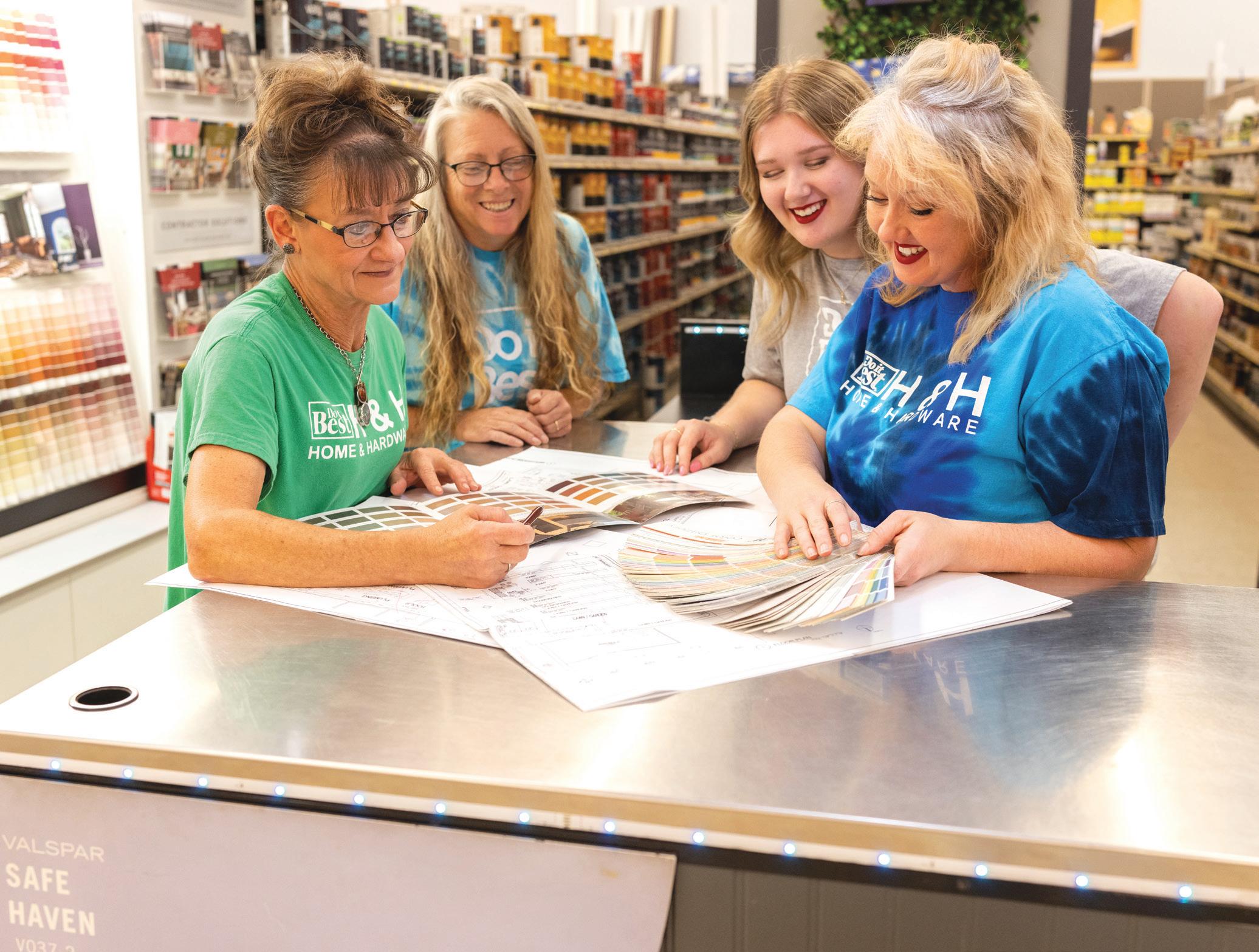
Centralizing Security
Read more insights from RH-ISAC on how you can make cybersecurity a core part of your business strategy at PDRmag.com/cybersecurity-strategy
BY LUKE VANDER LINDEN VICE PRESIDENT OF MEMBERSHIP AND MARKETING, RETAIL & HOSPITALITY ISAC
While keeping stores humming with happy customers is a top priority, safeguarding their data can’t be overlooked in today’s digital landscape. Cybersecurity might sound like a complex issue, but Cybersecurity Awareness Month—which kicks off in October—is here to empower you with the tools and knowledge to make online safety a seamless part of your business.
Participating in Cybersecurity Awareness Month is not just about checking a box or hanging a poster
in the break room. It’s about fostering a culture of security within your organization, minimizing the risk of data breaches and creating a secure and trusted shopping experience for both employees and customers. This translates to a win-win situation, strengthening your reputation and laying the foundation for long-term success in the ever-evolving retail landscape.
On the following pages, read some ideas for getting your team involved in cybersecurity preparedness and for educating your customers on best practices.
1Champion awareness. Sign up to become a Cybersecurity Awareness Month Champion at staysafeonline.org and receive a toolkit with free materials to customize your own Cybersecurity Awareness Month campaign.
2Learn from the experts.
Speakers from the National Cybersecurity Alliance are available to give presentations on topics ranging from overviews of online safety basics to more in-depth discussions from cybersecurity experts. There are also webinars and in-person events planned throughout Cybersecurity Awareness Month, so visit staysafeonline.org to find one to advance the knowledge for you and your team.
Get everyone involved. Employees from top to bottom are the first line of defense in keeping your operation safe from cybercriminals. Use Cybersecurity Awareness Month resources to create internal campaigns to remind employees of their role in protecting the business. Partner with your IT team to create interactive workshops where employees can test their phishing identification skills with simulated emails or participate in role-playing exercises that reinforce best practices for handling customer data. Inject some friendly competition and make awareness fun with a cybersecurity-themed trivia contest that rewards employees for completing online training modules or reporting suspicious activity. Offer prizes like gift cards or extra paid time off to boost participation.
Held each October, Cybersecurity Awareness Month is a global initiative designed to educate the public about online safety and promote best practices for protecting ourselves and our information. This year’s campaign theme is “Secure Our World.”
Why should I participate?
Cybersecurity Awareness Month presents a strategic opportunity to educate employees and solidify customer trust, a cornerstone of success in today’s competitive landscape. By leveraging the wealth of free resources available during Cybersecurity Awareness Month, retailers can craft impactful internal and customer-facing campaigns that can increase knowledge about cybersecurity best practices.
Where can I find resources?
Organizations like the Cybersecurity & Infrastructure Security Agency and the National Cybersecurity Alliance provide educational materials, training programs and awareness campaigns to help individuals and businesses learn more about the importance and impact of cybersecurity.
“I have a small business, so I’m not at risk for cyberattacks.”
FICTION: According to the National Cybersecurity Alliance, cybercriminals often target small businesses because they are easier to infiltrate. No matter the size of their operation, business owners have a responsibility to protect the information they’re collecting.
“Protecting the company from cybersecurity threats is the responsibility of my whole staff.”
FACT: More than 90% of cybersecurity incidents start with an email. Send all email users through a cybersecurity training program, and only give people access to the data they need, even executives.
“My customers don’t expect me to make the same investments in cybersecurity as big-box stores.”
FICTION: Consumers expect their data to be protected when they use a credit card or sign up for a rewards program. For small businesses that rely on customer loyalty and trust, it can be difficult to recover from cybersecurity incidents.
“There
are cybersecurity solutions within my budget.”
FACT: Implementing cybersecurity protections should be part of your overall loss prevention strategy. While there are low-cost options, taking cybersecurity seriously does require time, education and money.

The Retail & Hospitality Information Sharing and Analysis Center (RH-ISAC) is the trusted community for sharing sector-specific cybersecurity information and intelligence. The RH-ISAC connects information security teams at the strategic, operational and tactical levels to work together on issues and challenges, to share practices and insights and to benchmark among each other—all with the goal of building better security for consumer-facing industries through collaboration.
All members of the North American Hardware and Paint Association (NHPA) are eligible for a free trial membership to RH-ISAC. During Cybersecurity Awareness Month and throughout the rest of the year, RH-ISAC offers weekly threat-briefing conference calls, discussion groups focused on a wide range of topics and in-person training and professional development opportunities. Visit rhisac.org/nhpa to sign up for a trial membership and to access free resources, including a small business toolkit to reduce cyber-risk.
5Elevate internal communications.
Leverage your company’s internal communication platforms or social media channels to keep cybersecurity awareness top of mind. Share daily security tips, host Q&A sessions with cybersecurity specialists and recognize employees who demonstrate exemplary cybersecurity practices. This continuous engagement will solidify knowledge, demonstrate the critical role that all employees play in cybersecurity and keep employees vigilant.
Utilize consumer-facing campaigns. Consider leveraging consumer-focused outreach as part of your Cybersecurity Awareness Month efforts. By crafting engaging messaging campaigns that educate consumers about common fraud schemes, retailers can empower their customers and create a collaborative defense against scammers. Post short, informative videos or infographics to raise awareness about phishing tactics, showcasing red flags like suspicious email addresses or generic greetings. In-store signage can also help share the message. Provide clear messaging warning customers about counterfeit products, highlighting discrepancies in packaging or detailing common techniques used by fraudsters to mimic legitimate brands. Consider also sharing informative blog posts or articles on your website or in your email communications with explanations for how return fraud works or outlining steps to identify fake online stores, for example. Ultimately, informed consumers become active partners in the fight against fraud. Their vigilance can help identify scams before they cause damage, minimizing losses for retailers and fostering a safer shopping experience for everyone.
Building Blocks for Success
Head to YourNHPA.org/foundations to see what courses can elevate your team and maximize your store’s potential.
Understanding key concepts of leadership, personal development and merchandising are crucial to being a successful retail manager. The Foundations of Retail Program, led by the North American Hardware and Paint Association (NHPA), offers comprehensive online courses to prepare your key staff to become leaders in your operation. These courses offer flexibility for students’ busy schedules and feature industry-specific training created with the help of industry-leading retailers.
Barbara Smith, training and improvement manager for Wilco, completed the Foundations of Retail Program in 2021 because it aligned with her desire to continue her career growth at Wilco.
“Foundations of Retail provided insight into my leadership and communication styles, which now
helps me interact better with others on our team, as well as our wider employee base,” she says.
Smith appreciated being able to take the course with a co-worker because it opened opportunities to brainstorm and find additional ways to use the concepts they were learning. Smith also valued the business improvement project that students must complete as part of the Foundations of Retail Program because it taught her how to take a project from concept to implementation.
“I would definitely encourage any retailer to take part in NHPA’s Foundations of Retail courses,” Smith says. “As an older student, it was good for me to stretch my brain and learn new things. The online courses offered flexibility, but it was important to schedule dedicated time to complete the assignments.”
NHPA’s Foundations of Retail Program offers five online courses for new and seasoned leaders and managers. Courses start every month and offer flexibility for busy schedules.
In this 9-week introductory online course, students will discover their unique leadership style and strengths, laying the groundwork for ongoing leadership development and management growth.
This advanced leadership course picks up where Your Leadership Style leaves off, teaching managers the critical components of building and leading a successful team.
This course focuses on the skills needed to manage the financial side of business, including grasping the financial framework of a retail operation, key sales drivers and the most important ratios that measure retail productivity.
This course provides students with the strategies and skills to manage merchandising and assortment planning at their stores, including visual merchandising, vendor relations, category management and more.
Mentoring is a key component to developing great leaders at any company. This course trains current and future mentors on all aspects of the mentor/mentee relationship and how to serve as a mentor.
NHPA’s Foundations of Retail Program gives independent retail teams the confidence, knowledge and job-aligned skills they need to succeed in today’s dynamic retail workplace.
YourNHPA.org/foundations to see what self-paced courses can elevate your team and maximize your store’s potential.
As a young leader in his organization, Josh Weaver went into the NHPA Foundations of Retail Program in 2020 looking to grow as a leader. Weaver, now the merchandising manager for PaulB Hardware in Pennsylvania, had just completed PaulB’s internal leadership courses and had taken a lead role for a major store reset, overseeing several employees. He was ready for the next step when his manager approached him about enrolling in the NHPA Foundations of Retail Program.
“PaulB has always been a career and growth focused company, and NHPA Foundations of Retail was a natural next step for me, as I was just heading into my first leadership role,” Weaver says. “I’m always hungry for the next opportunity, so I took it and ran with it.”
Soon after completing the Foundations of Retail Program in early 2021, Weaver entered manager-on-duty training through PaulB, became the project manager when PaulB launched a new store, moved into other manager roles and completed NHPA’s Retail Management Certification Program. While a lot has happened since he finished the course, Weaver says he still utilizes lessons he learned, especially building skills in delegation.
“The inability to delegate seems to be one of the biggest roadblocks in management, and I fortunately learned the first level of delegation through Foundations of Retail,” Weaver says. “I sure didn’t learn it to the extent that I needed to, but I received a solid foundation to grow from.”
Another key takeaway for Weaver was the program’s inside-out approach, where he got to know himself through personal assessments and lessons on emotional intelligence.
“You can invest in somebody and teach them how to lead others, but until they understand themselves, they don’t really have a solid foundation to lead others,” Weaver says. “Before you start scrutinizing and vetting others, it’s crucial to take a good look at yourself, which is an important lesson I learned in Foundations of Retail.”
Weaver also valued having the course broken down into smaller segments to better digest the information. He also says the capstone project stretched him and helped him better understand what is required to complete a project.
“At the end of the day, we get out what we put into anything, but if somebody is truly seeking to grow, Foundations is a worthwhile course,” he says.
Retailers who complete the Foundations of Retail Program and are looking for additional avenues for leadership training can take part in the NHPA Retail Management Certification Program (RMCP). Here are five reasons to consider RMCP to grow in your operation.
1 |
The program is a college-level course developed in conjunction with industry experts, university educators and successful retailers.
2 |
RMCP provides actionable knowledge to make a difference in your store immediately.
3 |
Over 300 retailers have embarked on the RMCP journey, learning skills needed to grow store sales and profits in today’s changing retail landscape.
4 |
The course curriculum covers multiple aspects of the business, and its industry-specific nature allows learning to be immediately applied to the business.
5 |
The program is designed specifically to benefit employees in the independent home improvement channel.



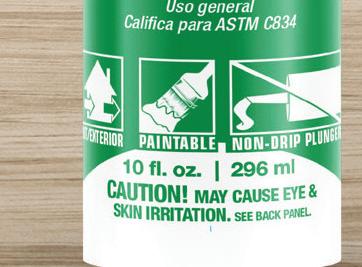
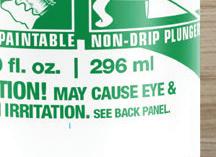












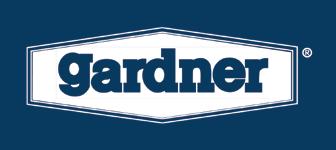




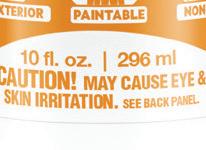










Gardner offers a complete line of professional painter’s caulks including our new Quick Dry Siliconized Acrylic A6 Sealant. The painter-friendly technology in A6 is smooth, easy to apply, and ready for coating in just 30 minutes! www.icpgroup.com |
BY JACOB MUSSELMAN
Merchandising may be your silent salesman, but when it comes to add-on sales, you want customers to get the message loud and clear. So when selling paint projects, don’t overlook the cleaning products category. As an independent retailer bringing your customers’ projects to life, it’s important to stock basic painting supplies in addition to sponges, rags and other cleaning products to offer a comprehensive solution
Paint & Decorating Retailer spoke with two retailers who take a similar approach to selling the whole project and share how they organize their stores to make the most of the cleanup category.
With store locations between two large cities in California—San Francisco and San Jose—Gray’s Paint Stores serves high-end contractors and DIYers who value cleanliness during their projects.
“These high-end customers expect contractors to be clean,” says Daniel Engels, Gray’s Paint Stores manager. “They do not want to hire a messy contractor because they don’t inspire confidence that they’re going to do the job right. Cleaning supplies are massively important on a job.”
Paint prep products are just as important to the painting process. Learn about prep products to stock to better serve your customers at PDRmag.com/project-prep

Because the majority of his customers are contractors, Engels organized his store layout in a way that best serves them. Walking into the Redwood City location, the first product customers see is the color wall, followed by paint. The middle of the store holds his “mess-making” products.
Since he began working at the store in an official capacity in 2020, Engels says he’s seen major innovations in project preparation, as well as cleaning products. He says project preparation is just as important as cleaning up afterward.
“We know our customers are going to make a mess, so having the products they’re going to need to clean up that mess within a 6-foot radius of the other products they need puts prep products in their eyeline,” Engels says. “This strategy helps them get everything they need for their project.”
Employees at Vermont Paint Co., which has locations in Burlington and Williston, Vermont, took notice of the specific ways customers were shopping their store. They then used that information to decide where and how to sell their cleaning products and better capitalize on shoppers’ habits.
“We’ve rearranged some of our shelving so products are more organized on the shelves,” says Torin Barker, Vermont Paint Co. manager. “This also allows movement and extends the view of the store so customers can see certain products in other areas. Hopefully they’ll see other items they didn’t know they needed.”
Barker began his career with one of the biggest paint manufacturers in the industry, and during his transition into the retail side, he utilized his experience working in the sales sector to decide what products his store needs and how to merchandise them.
“One of the biggest mess-making jobs in the paint industry is sanding. Six years ago, we picked up the Festool line of vacuum extractors. They’ve saved our customers thousands of dollars in terms of time and cut down on the cleanup time and made our customers more efficient.”
—Daniel Engels, Gray’s Paint Stores








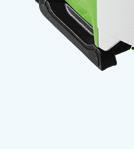
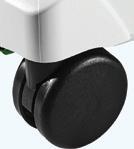











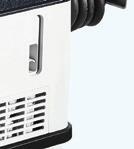



MOBILE DUST EXTRACTOR FESTOOL GMBH festoolusa.com
The CLEANTEC CT36 E HEPA from Festool is a lightweight, powerful dust collection system made for the job site. It has a 36-liter container and can move around on its swiveling castor wheels while producing high suction and features an antistatic function that prevents buildup during work.
Currently operating in 12 states and the District of Columbia, PaintCare is a nonprofit established by the American Coatings Association to implement manufacturer-led paint stewardship programs in states with paint stewardship legislation. To be considered to become a PaintCare drop off location, you must be located in one of the states where PaintCare operates and have storage space for its recycling bins, which are the size of a pallet. If your store is accepted into the PaintCare program, you will receive the reusable paint collection bin, training materials and a spill kit.
Source: paintcare.org

Eternity is our highest performing exterior acrylic coating. The high build finish bridges hairline cracks and dries to a luxurious Low-Lustre sheen that lasts and lasts.
You’ll feel the quality as your brush and roller glides on the thick high solids paint.
The advanced waterborne acrylic technology in Eternity stands up to years of exposure to sunlight, rain, snow, and seasonal temperature changes in all climates for maximum weather protection.

“If a customer is coming in for just a gallon of paint and that’s all they leave with, you’re leaving money on the table,” Barker says. “From the corporate side, when I was a sales representative, we had customers who used little to no paint, but we could sell them rags and empty buckets for waste. I use that same mindset as an independent retailer.”
Barker says another aspect to having a successful cleaning product category is product selection and proper merchandising. As you merchandise, take into consideration similar products or products that are used with one another. For example, near your paint rollers, cross-merchandise drop cloths and paint tray liners to encourage add-on sales.
“We moved all of our paint off the floor because our customers are already coming in for paint,” Barker says. “It’s on us to understand what other products best fit their project to make it easier on the customer.”
Barker says it’s important to have products like rags and contractor bags in accessible areas near one another in the hopes that the customer will see them as they’re working their way through the store.
By training his employees to invest in each customers’ project, he says they’ll do a better job of getting a scope of their project and find the items they’ll need for the job.
“We’re here to educate the customer,” Barker says. “They may come in and think they just need a gallon of paint and a brush, but then all of a sudden, they’ve got paint all over their floor, they’ve made a huge mess and had a bad experience. That falls on us. By selling the whole project from start to finish, it shows customers that you care and want them to find success.”




Stay up to date on the latest industry news by subscribing to our newsletters at PDRmag.com/subscribe.
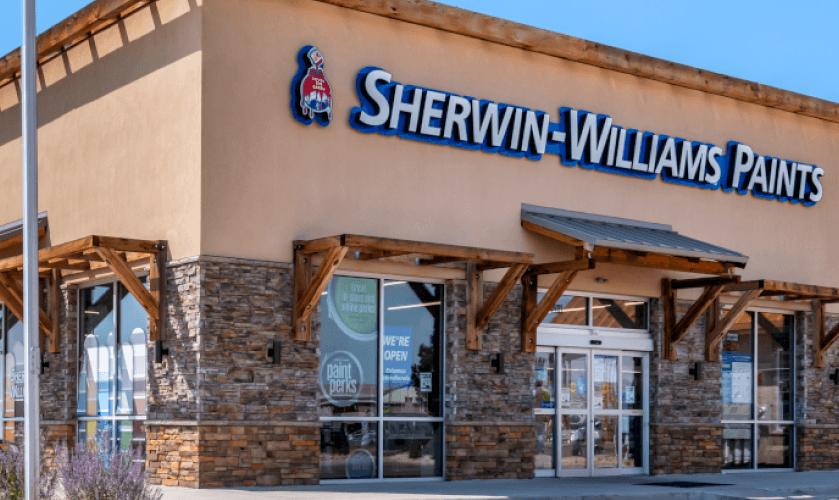
The U.S. economy grew twice as fast compared to the first quarter, which was supported by consumer spending and private inventory investment, according to the National Association of Home Builders.
Home Improvement Companies Make NRF’s 2024 List of Top 100 Retailers
Compiled by Kantar, a global marketing data and consultancy company, the 2024 Top 100 Retailers list ranks the industry’s largest companies according to domestic sales.
Sherwin-Williams Shares
Q2 Financials
In its Q2 earnings report, Sherwin-Williams showed growth in its Paint Stores Group and Performance Coatings Group, but a decline in its Consumer Brands Group. Combining all groups, new sales increased 0.5% in the second quarter of 2024, totaling $6.27 billion.
J.D. Power Releases Paint Customer Satisfaction Survey Results
Receiving over 7,000 responses over the last 12 months, the J.D. Power Paint Satisfaction Study examined consumers’ experience based on six factors when shopping at the largest paint manufacturers that represent at least 67% of market share.
To read these news stories and other news, visit PDRmag.com/news.
“Naturally Refined” has been selected as the 2025 Color Collection of the Year, a mix of 10 shades, including creamy neutrals, warm browns and oranges and muted yellows and greens. The collection includes Quietude, the collaboration’s color of the year.
EACH MONTH , Paint & Decorating Retailer shares stories of the ways independent home improvement retailers are engaging with their customers and communities in its The Big Picture section. Visit PDRmag.com/big-picture to read each month’s stories and check out three of the stories below.
Started last year in September, the Service Superstar program at The Paint Shop highlights staff who have been recognized by customers through Google reviews for outstanding service. The Paint Shop operates 38 locations in Nova Scotia, Newfoundland and New Brunswick.
“Each month we review the Google reviews that are posted online and choose the person who either received the most recognition or an outstanding recognition from a customer,” says Kelli-Ann Smith, director of merchandising.
“The program works two-fold as a way to call out our ‘Service Superstars’ but also Google reviews are an excellent way to show credibility, reliability and demonstrate excellent customer service to our customers.”
Each month, the Service Superstar is awarded a certificate, featured on the operation’s Facebook page along with the glowing review and shown on the digital TVs in every store. They also receive a $50 gift card from either Amazon, Tim Horton’s or Visa.
“The staff have been very receptive to the program to date but once we reach the year mark, we intend to do a survey to receive feedback on the program and any improvements that could be made as we head into year two,” Smith says.
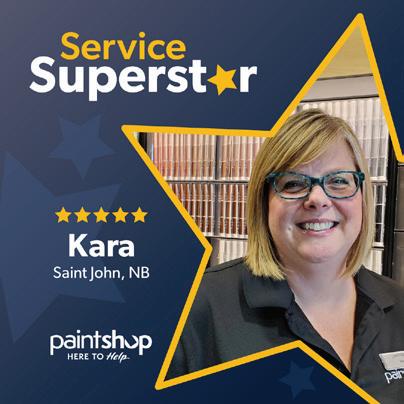
At Hill Country Paints, with locations in Waco, College Station and three in Houston, Texas, young customers can enjoy the shopping experience while their parents browse, thanks to a toy box in the store filled with fun goodies.
Employee development manager Steven Hill says they added the box filled with small stuff animals, little games and other cute toys to keep children occupied and happy to give parents a chance to pick out paint colors and shop the store.
“The children love the toys and parents really appreciate us for providing an extra level of customer experience they weren’t expecting,” Hill says.

Whether they’re looking for custom window treatments, flooring, area rugs, countertops, wallpaper or paint, customers can find all the options they need to make their homes unique at West Side Decorating Center in Saginaw, Michigan. To complete the project, they may even want to add a piece of local artwork, and the store’s team has options for that, too.
Several paintings by a local artist are positioned around the salesfloor, which help decorate the store, offer conversation starters and give customers some decor options.
“We worked with a local artist to sell some of their paintings on consignment,” says Maverick Spoke, store manager. “All of the pictures depict a scene that somehow relates to the history of Saginaw. As a local business ourselves, it’s a great way for us to help support a local artesian.”

September
To add your event to the industry calendar, send an email to editorial@YourNHPA.org *Events are



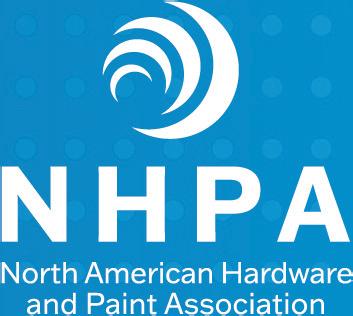


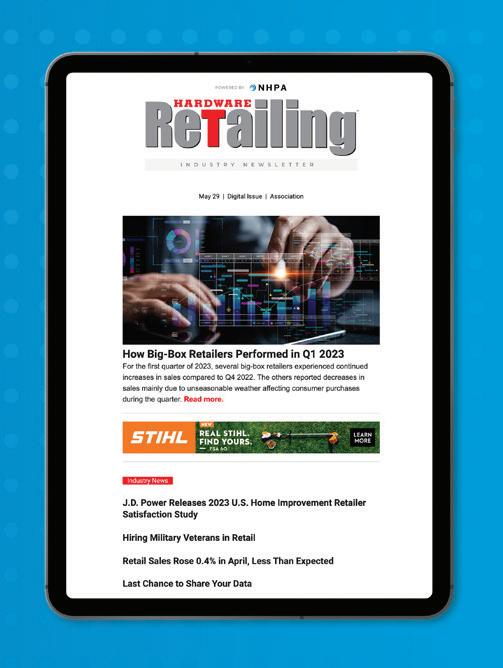


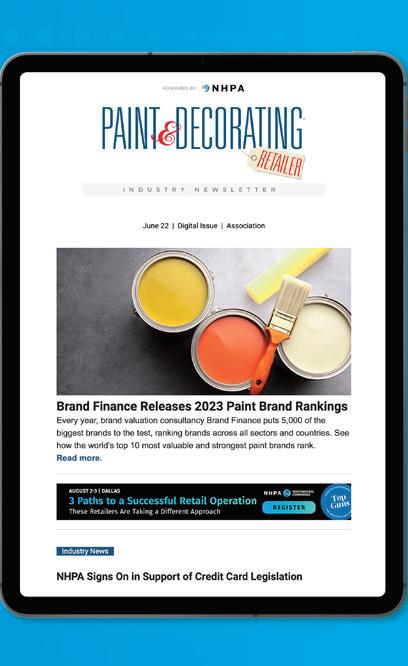
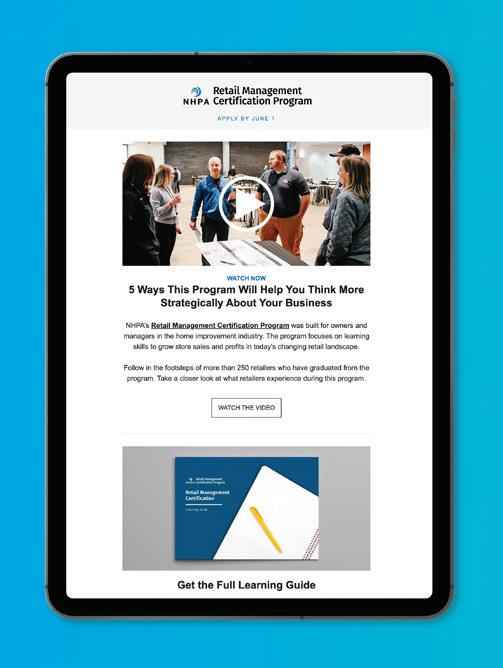


Exclusive to Premier Members, NHPA Licensing is a comprehensive industry-specific training solution for independent retailers.
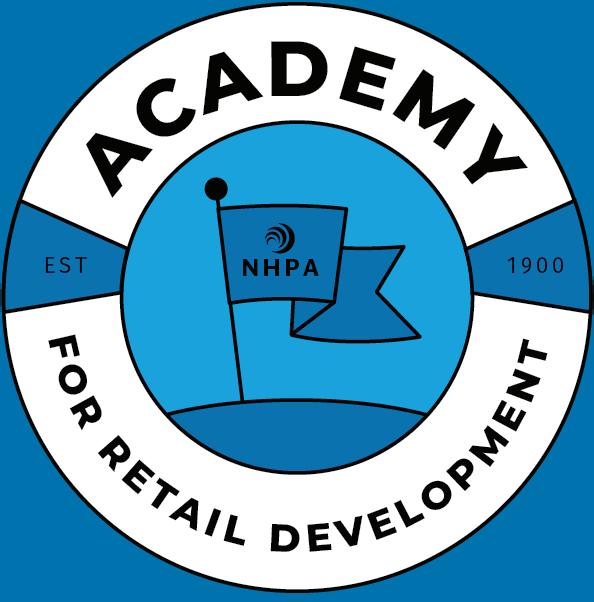
43+ COURSES, 273+ MODULES
Incorporate NHPA’s library of industry-specific courses on your own learning management system (LMS). Gain full access or select courses à la carte.
EXPERTLY CREATED
Courses developed by industry leaders with decades of retail experience and success.
COST-EFFECTIVE
Easily add courses to your LMS, saving time and money.
PROVEN RESULTS
Enhance employee skills, boost productivity and drive growth.

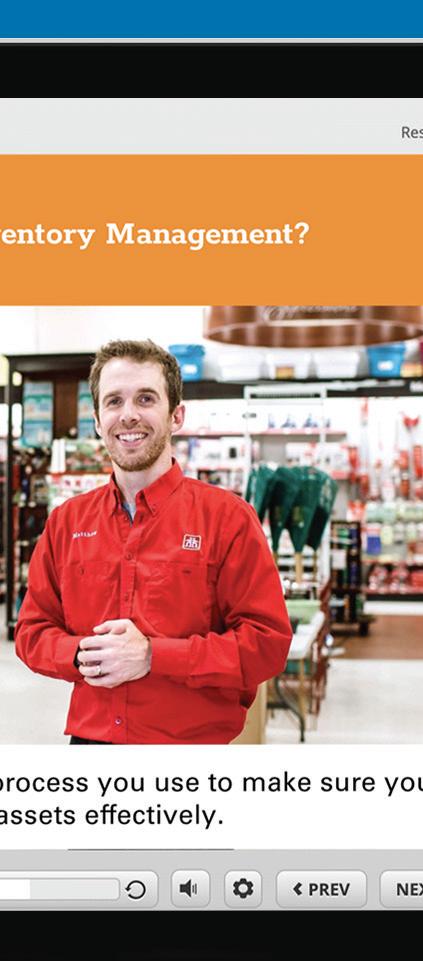
“NHPA
—Rodney Bullion, TAL Holdings LLC.












BPDRmag.com/2024-IHI-conference


ringing the independent channel together in Marco Island, Florida, the 2024 Independent Home Improvement Conference (IHI Conference) featured sun, sand and strategy, sending attendees home with best practices on retail operations and innovation. Attendees of the event, which was hosted by the North American Hardware and Paint Association and The Hardware Conference, included

retailers from all affiliations, industry vendors and other channel players, who all enjoyed educational sessions, networking opportunities and social events.
Don’t miss the October issue of Paint and Decorating Retailer for a full recap of the event, including a celebration of the Young Retailer of the Year honorees, and check out the IHI Conference by the numbers below.

See You Next Year!

We just wrapped up 2024, but can’t wait for 2025. Register now for the 2025 Independent Home Improvement Conference at 2025.ihiconference.org and save big with exclusive launch pricing. Available for a limited time and only for the first 250 registrants. SCAN TO REGISTER





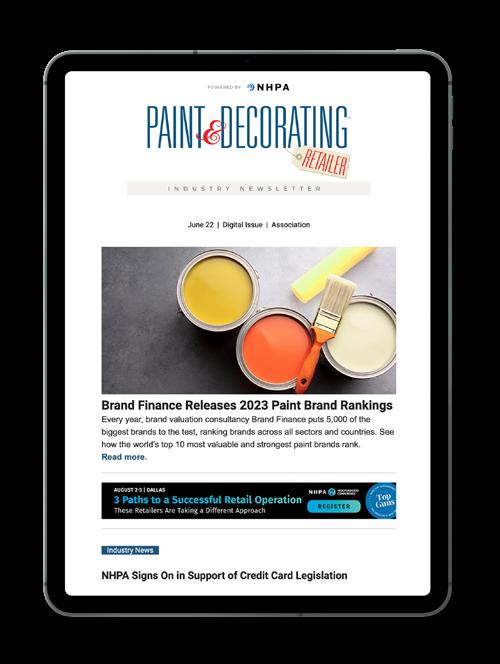



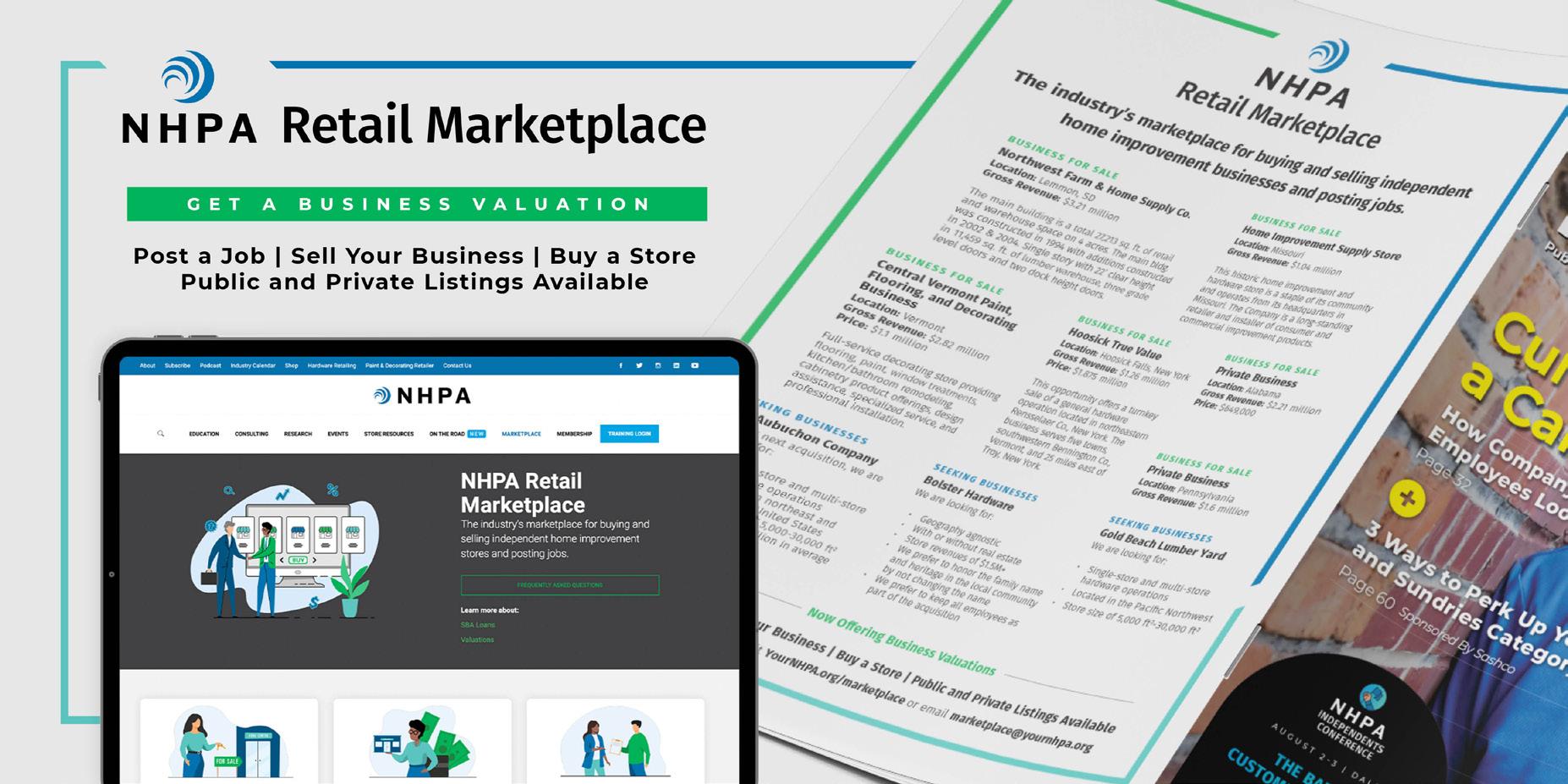








































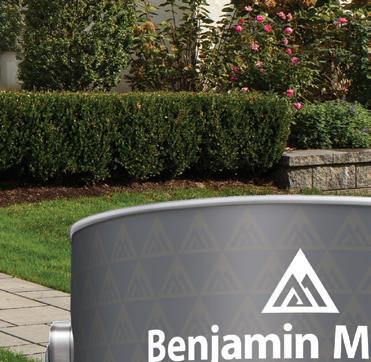









•
•
•
•





ProLuxe






